Le musée sâme Siida a été élu Musée européen de l’année 2024. Siida a également été désigné comme Musée de l’année 2024 en Finlande !
!
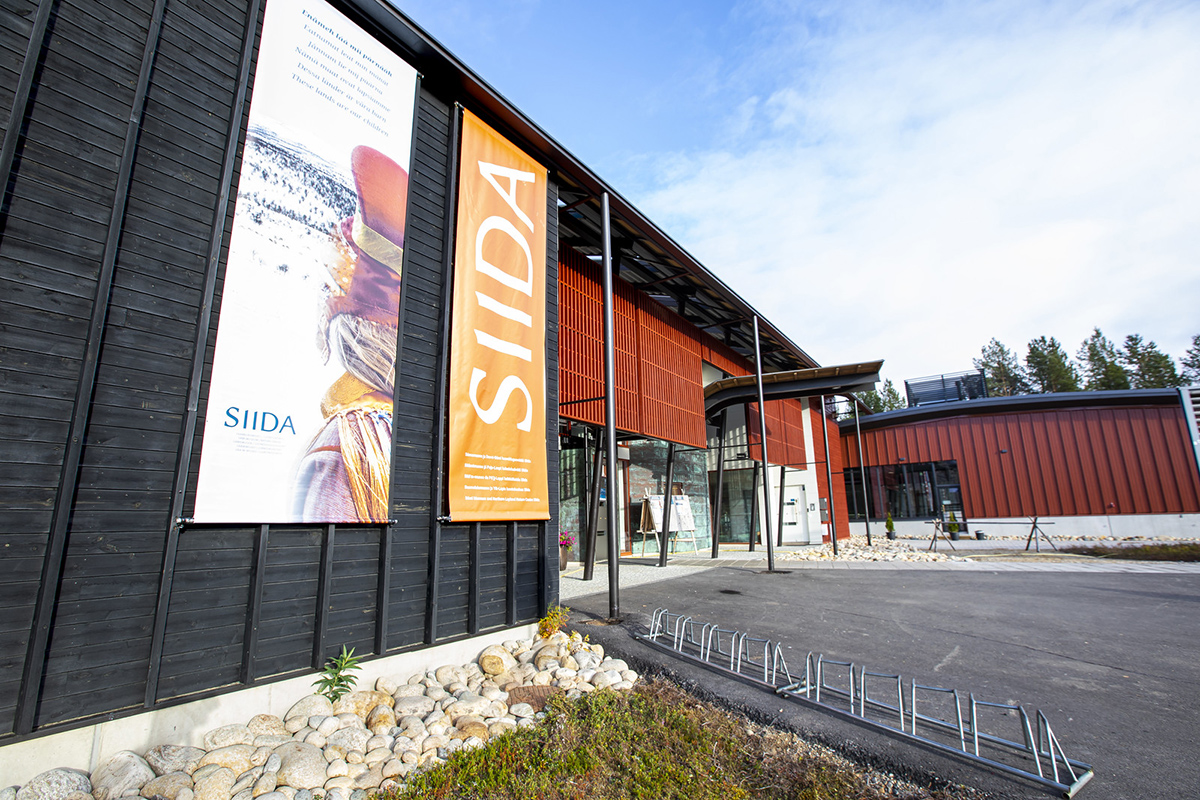
Siida est situé dans le village d’Inari, en Laponie du Nord, sur les rives du lac Inari, au cœur de la culture sâme. Inari, village pittoresque, attire depuis longtemps des visiteurs pour son atmosphère paisible, la beauté époustouflante de la nature environnante et ses expériences culturelles.
Siida est un lieu de rencontre dynamique pour les touristes et les locaux. Au fil des ans, il est devenu la destination touristique la plus importante de la Laponie du Nord. Près de 140 000 personnes visitent Siida chaque année, provenant de 90 pays différents. La nouvelle exposition permanente, Enâmeh láá mii párnááh – Ces terres sont nos enfants, réalisée en collaboration entre le Musée et le Centre Nature, a ouvert ses portes en juin 2022.
Le bâtiment Siida abrite le Musée sâme et le Centre Nature de Laponie du Nord Siida en partenariat. De plus, le Restaurant Sarrit, opéré en privé, propose un buffet-déjeuner quotidien lorsque Siida est ouvert.
Le musée gère également la boutique Siida, où vous trouverez une sélection soignée d’artisanat local et de souvenirs responsables. Pour plus d’informations sur les sentiers de randonnée et les attractions de la région, visitez l’office de tourisme d’Inari situé au Centre Nature Siida.
Enâmeh láá mii párnááh – “Ces terres sont nos enfants”
L’exposition commune du Musée sâme et du Centre Nature de Laponie du Nord Siida, Enâmeh láá mii párnááh – Ces terres sont nos enfants, explique et interprète les strates du paysage à travers le concept sâme d’environnement culturel. Selon ce concept, nature et culture sont étroitement liées. Le paysage qui nous entoure s’est également formé sur des millions d’années, façonné par la nature.
Le nom de l’exposition provient d’un poème écrit par Matti Morottaja, un poète sâme d’Inari.
Dans les environnements culturels sâmes, le lien avec la terre et les environs se construit à travers les connaissances traditionnelles et les souvenirs. La mémoire de l’héritage sâme a traversé les changements naturels et sociétaux, de génération en génération. Le contenu culturel de l’exposition reflète la manière dont le passé vit en nous. Chaque individu porte un héritage diversifié de différentes époques, ce qui l’aide à s’adapter aux changements autour de lui.
Le Musée sâme a impliqué plus de 300 membres de la communauté sâme dans le processus de renouvellement de l’exposition.
« En tant que musée des peuples autochtones, le Musée sâme Siida est principalement destiné aux Sâmes eux-mêmes. Cependant, nous sommes très heureux que notre histoire sâme résonne également auprès du secteur muséal européen et des visiteurs du monde entier », déclare la directrice du Musée, Taina Pieski.
Dans la section nature de l’exposition, les visiteurs sont invités à réfléchir aux changements climatiques en cours et à ce qui pourrait arriver à notre climat à l’avenir. Les thèmes liés à la nature sont explorés à travers les zones protégées de la Laponie du Nord et les divers habitats naturels et espèces qui y sont présents.
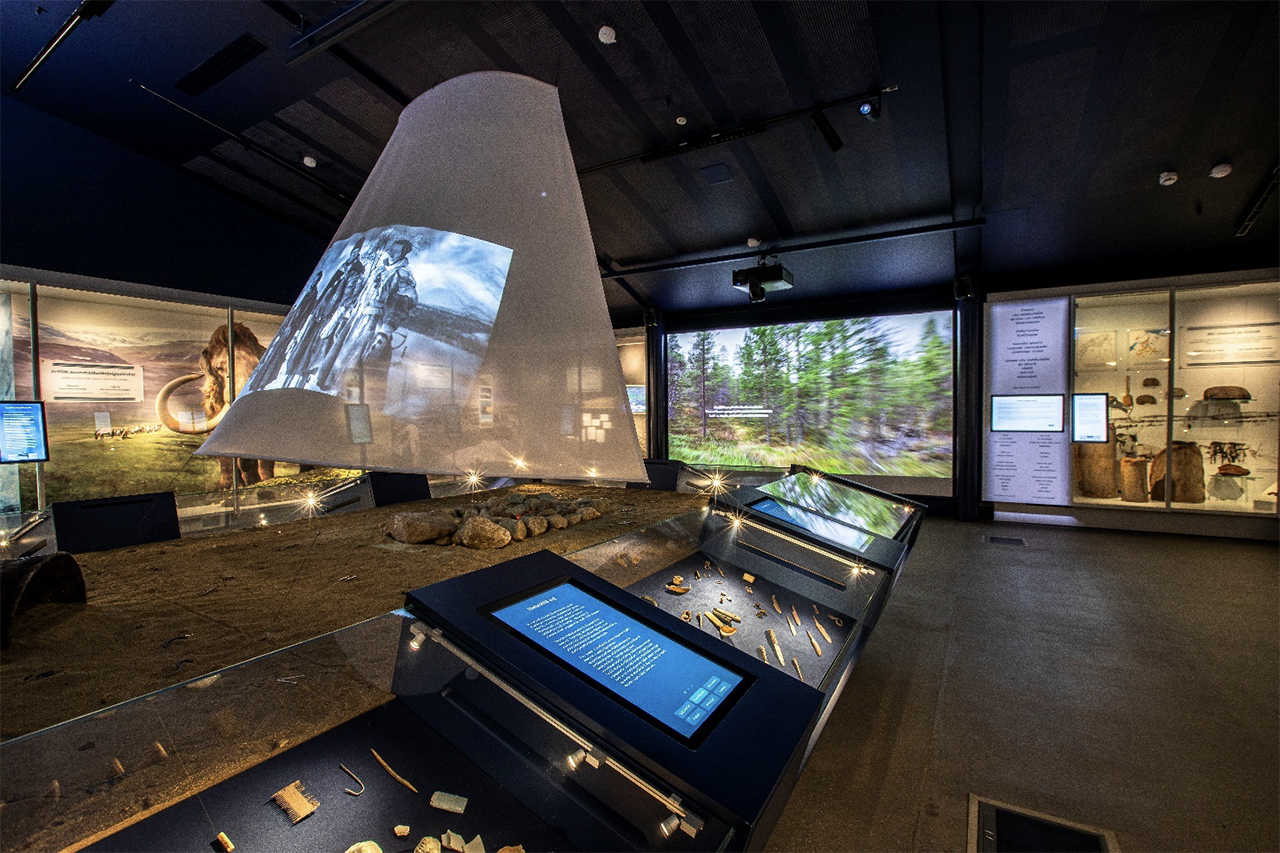
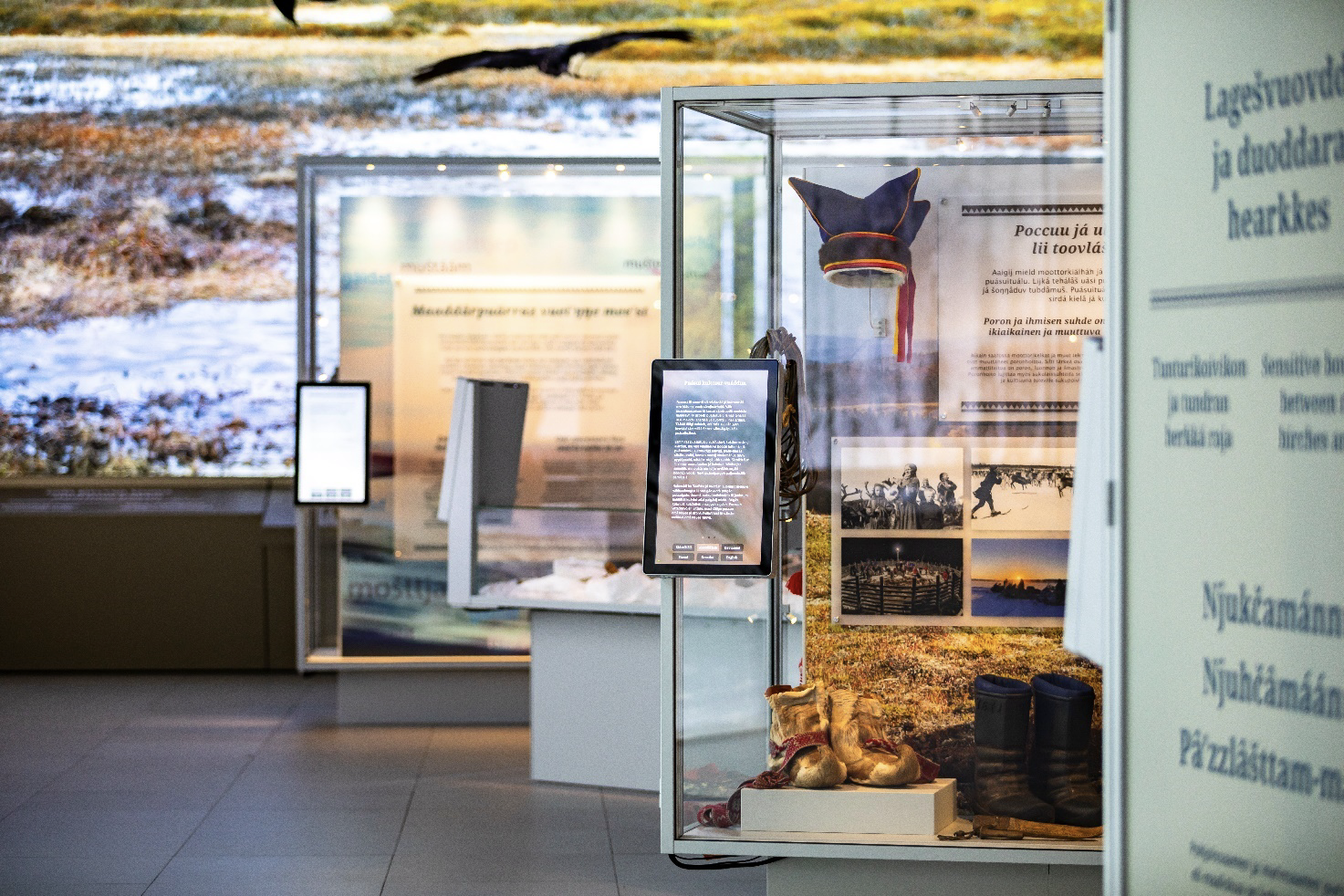
Artisanat traditionnel sâme, Duodji, et art comme partie de l’exposition Siida
Une approche narrative entièrement nouvelle dans l’exposition permanente est l’implication des artistes dans la production des contenus. La présentation de la culture sâme repose sur la présence du passé dans notre temps, introduisant la culture sâme aux visiteurs. Le message de l’histoire culturelle et des connaissances traditionnelles est fortement combiné à l’expertise des artistes sâmes contemporains et des duojárs, ou artisans sâmes. De même, la section nature de l’exposition met en valeur l’expressivité de l’art inspiré par la nature.
La directrice artistique de l’exposition du Musée sâme est l’artiste sâme Outi Pieski, qui a également créé des œuvres soutenant le message de l’exposition.
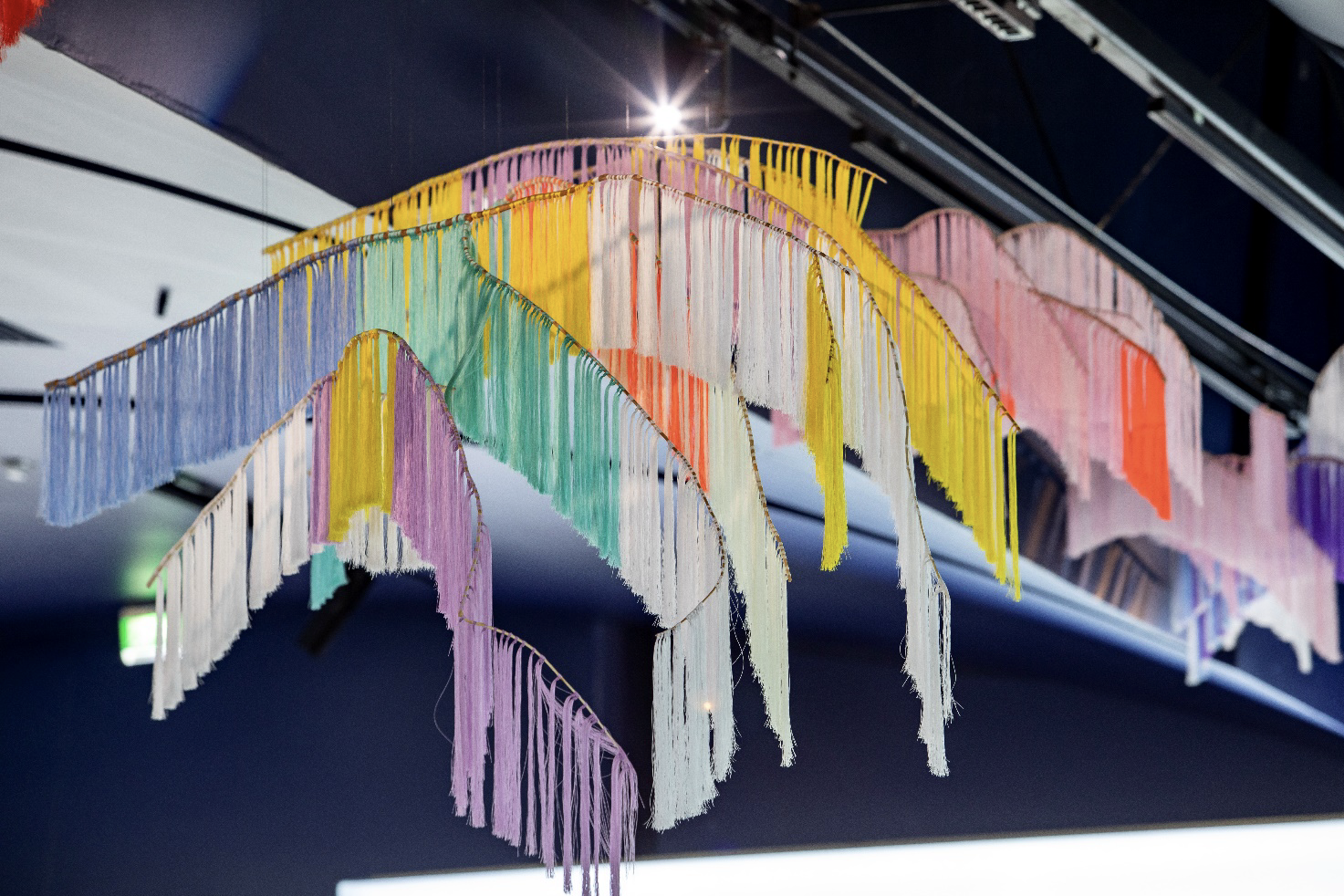
L’œuvre d’Outi Pieski, « The Land Flows in Colours », s’élève au-dessus de la salle d’exposition. Photo : Rauno Koivunen / Musée sâme Siida.
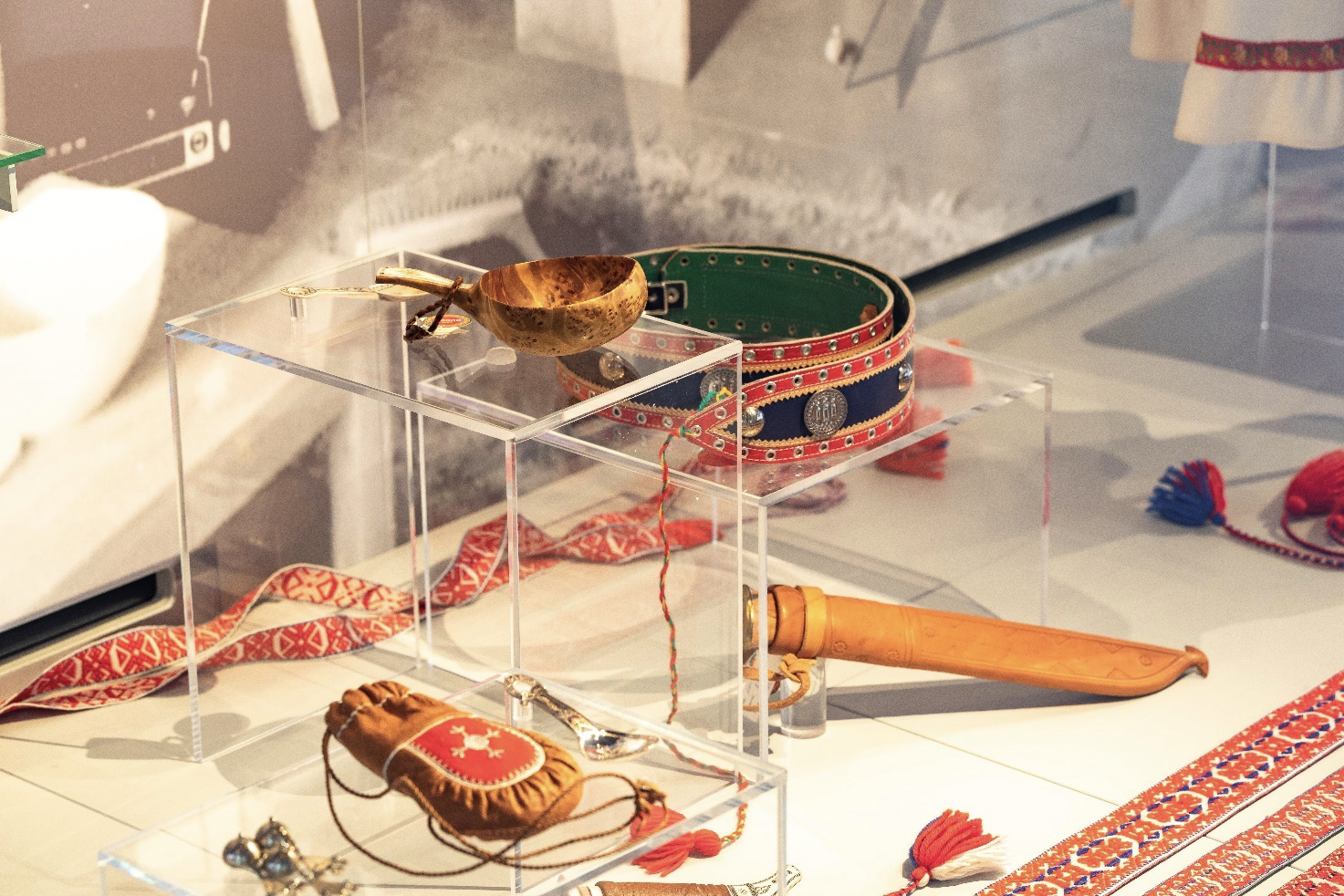
L’art sâme a toujours été très présent dans les objets du quotidien et l’artisanat, connu sous le nom de duodji.
Photo : Rauno Koivunen / Musée sâme Siida.
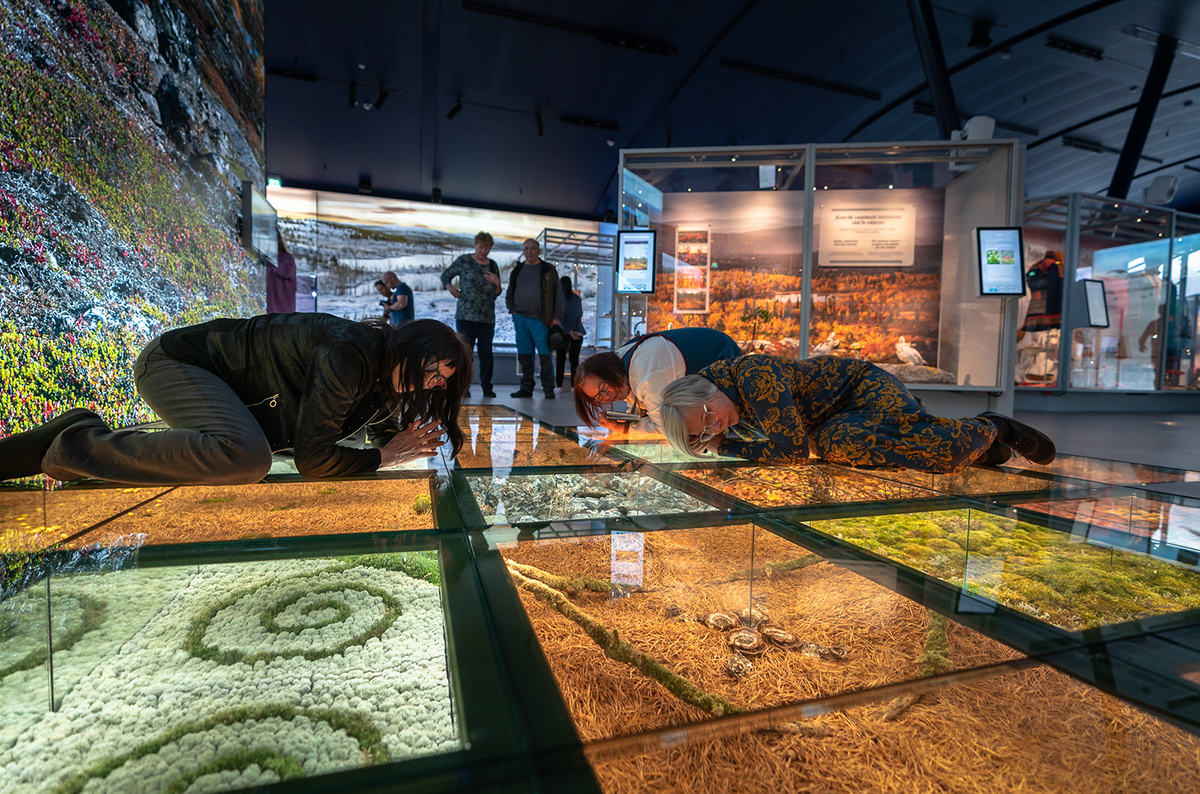
Kuva: Ruijanpolku / Finnmark Trail art by Anni Rapinoja. Photo by Juha Kauppinen..
Musée en plein air Siida – À la découverte des 10 000 ans d’histoire d’Inari
Le Musée en plein air de Siida est ouvert toute l’année, selon les conditions météorologiques, et raconte l’histoire d’Inari sur 10 000 ans. Des preuves archéologiques montrent que des populations ont vécu sur les rives du lac Inarijärvi depuis près de 10 000 ans, à l’époque mésolithique du Néolithique.
Le musée en plein air propose un sentier d’environ 800 mètres en forme de lasso de berger de rennes. Ce sentier permet aux visiteurs de découvrir environ 50 bâtiments et structures, regroupés selon leur aire culturelle et leur usage prévu. Les présentations abordent l’héritage culturel, le patrimoine architectural et les moyens de subsistance des trois cultures sâmes de Finlande.
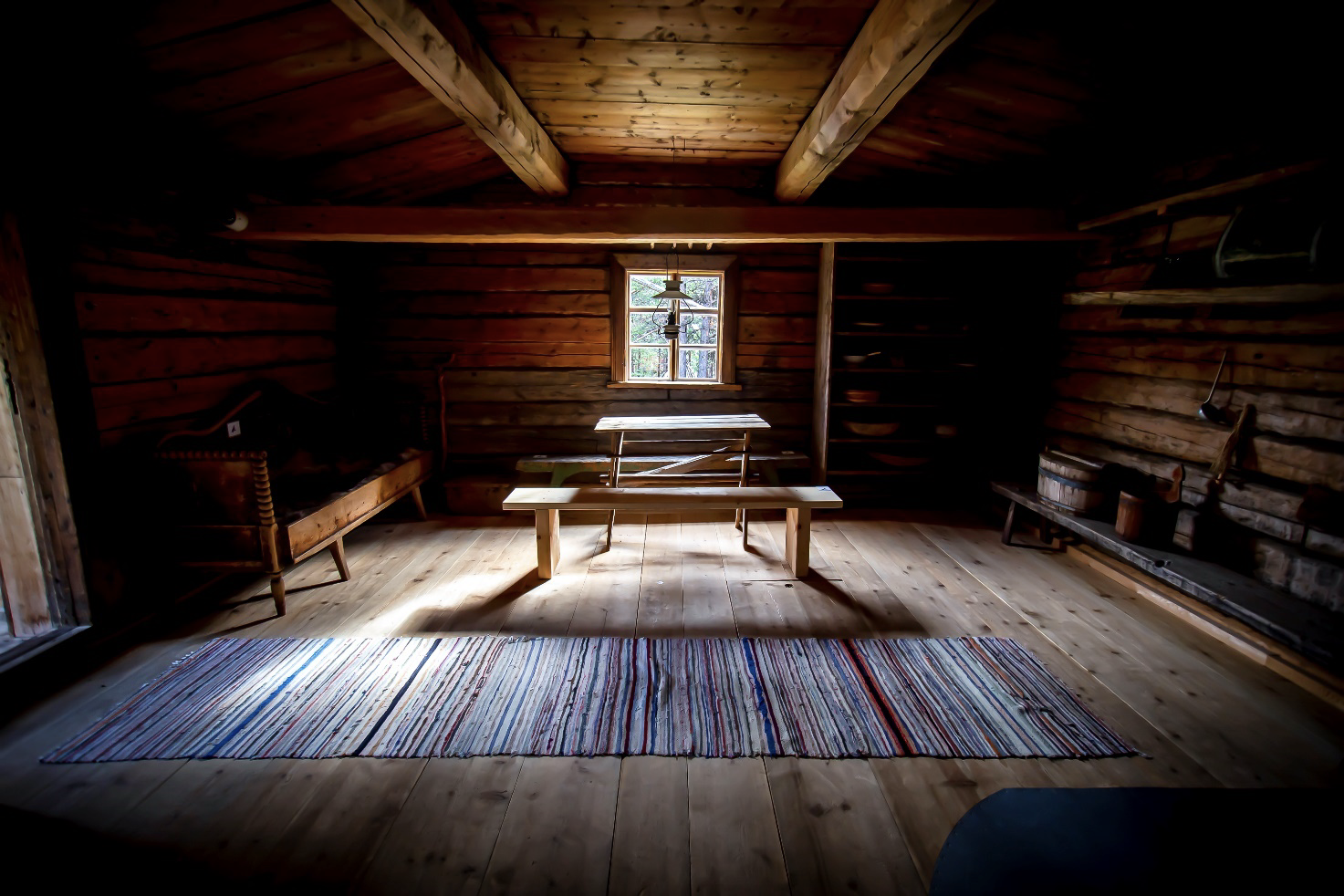
Le Musée en plein air de Siida présente aux visiteurs les 10 000 ans d’histoire d’Inari
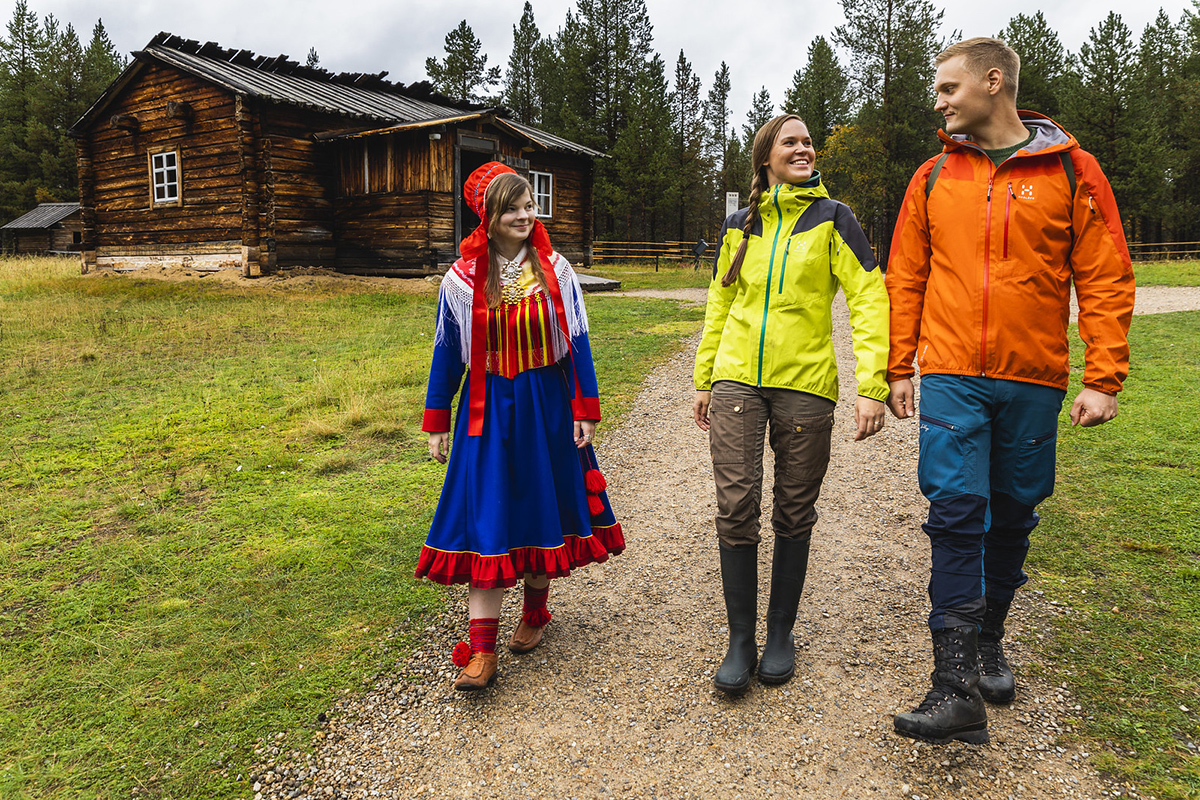
The area features nearly fifty buildings.
Maison du patrimoine Skolt
Le Musée sâme gère également la Maison du patrimoine Skolt dans le village de Sevettijärvi, ouverte en été et gratuite pour les visiteurs. La Maison et le Musée en plein air sur son terrain présentent l’histoire des Skolts et montrent les modes de vie et de construction de deux époques différentes.
Les Skolts vivaient à l’origine dans des colonies situées en Russie, dans des territoires cédés à l’URSS après la Seconde Guerre mondiale. Après la guerre, les Skolts ont évacué Suonikylä et ont été installés dans la région de Sevettijärvi – Näätämö en 1949.
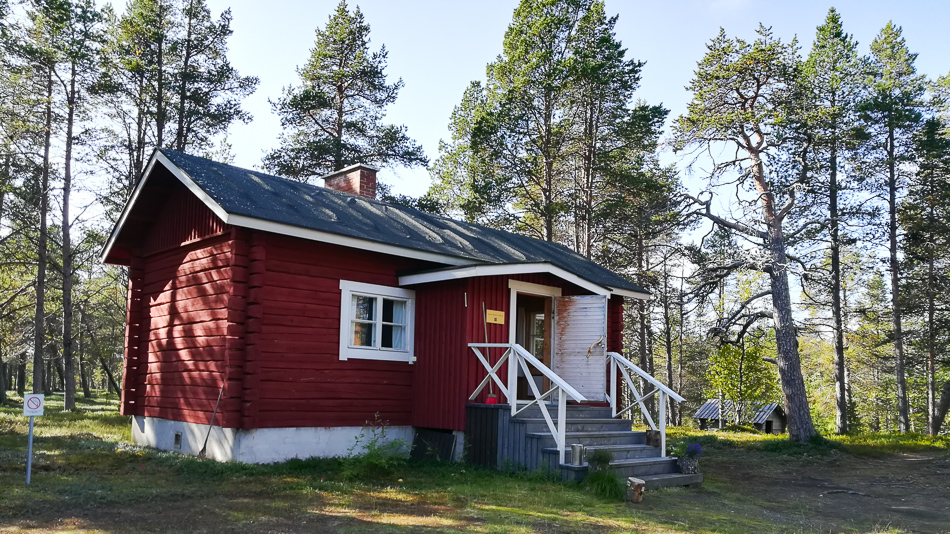
Skolt Heritage House
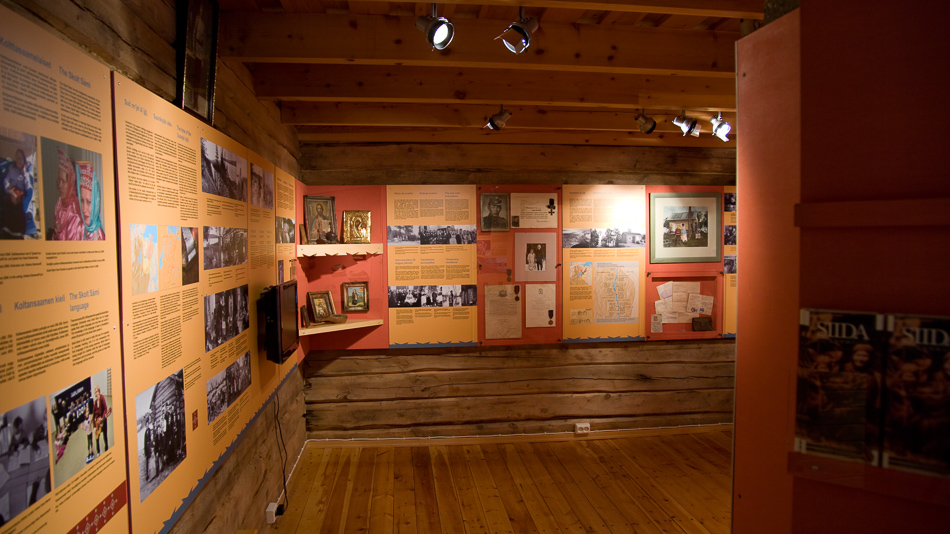
Maison du patrimoine Skolt. Découvrez l’histoire des Skolts Sámes à la Maison du patrimoine de Sevettijärvi.
La nature à couper le souffle d’Inari
Cette région de la Laponie du Nord est l’une des plus belles de toute la Finlande, dominée par la nature protégée de ses parcs nationaux et de ses zones sauvages. Au sud-ouest se trouve le parc national Lemmenjoki, qui s’étend sur environ 2 860 kilomètres carrés. La rivière Lemmenjoki serpente sur plus de 70 km à travers les monts Maarestatunturi et Viipustunturi, dont les pentes sont couvertes de forêts anciennes uniques de pins.
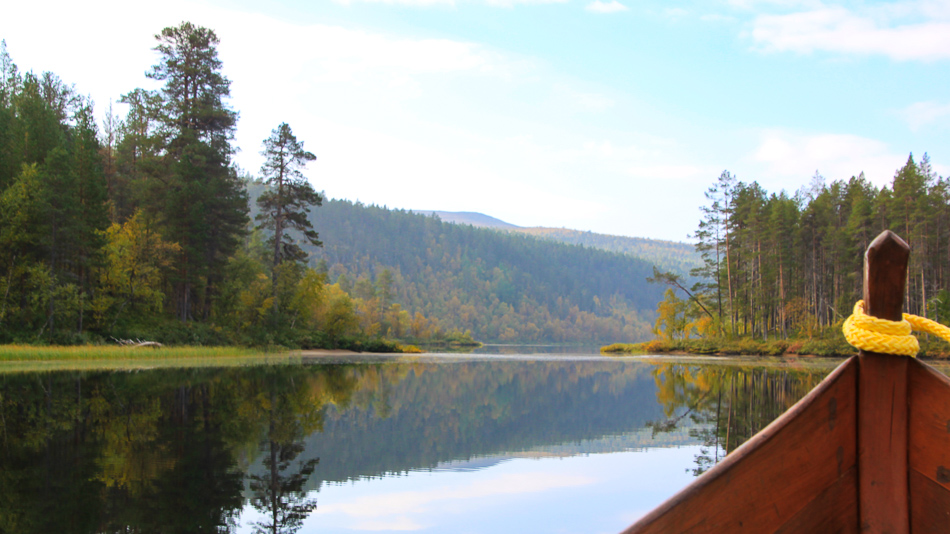
Lemmenjoki
Le parc national Lemmenjoki propose 60 km de sentiers balisés pour la randonnée et le vélo, dont la plupart commencent au village de Njurkulahti. Ces sentiers varient en longueur, du sentier nature Lemmenjoki de 4,1 km au sentier circulaire Joenkielinen de 16 km, jusqu’au sentier circulaire de Ravadasjärvi qui dépasse les 26 km.
À proximité du village d’Inari se trouve la zone de randonnée d’Inari, qui comprend d’excellents sentiers balisés et des destinations idéales pour une journée de randonnée. Le nouveau pont suspendu qui traverse la rivière Juutuanjoki est situé à trois kilomètres du village d’Inari, au-dessus des rapides de Jäniskoski.
La zone de randonnée d’Inari comprend également la région d’Otsamotunturi et celle entre le magnifique mont Tuulispää. Le sentier de 5 km menant à l’église de Pielpajärvi traverse une ancienne forêt magnifique, bordée d’étangs et de lacs boisés. Au bout du sentier, vous découvrirez l’église de Pielpajärvi, bien préservée. D’une grande importance culturelle et historique, l’église de Pielpajärvi a été construite en 1760 et figure parmi les plus anciens bâtiments de la Laponie du Nord.
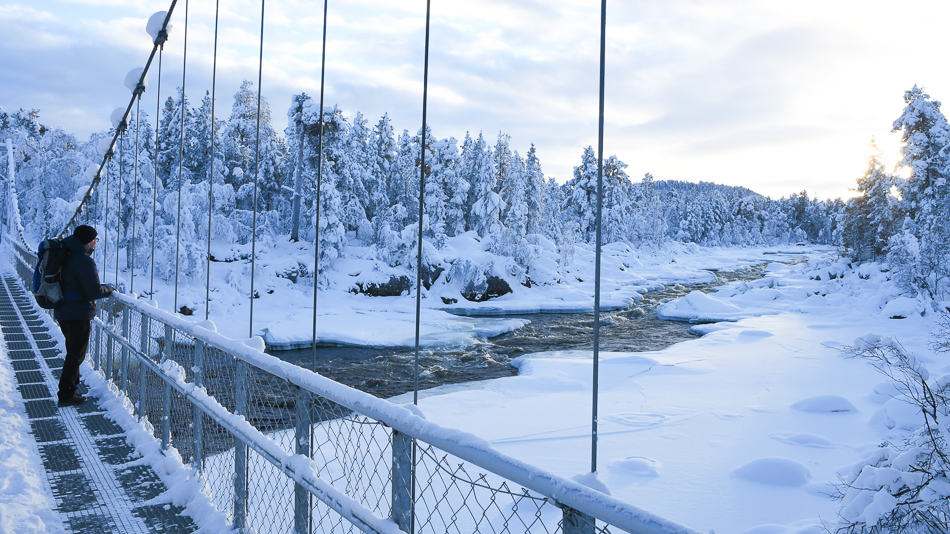
Comment s’y rendre
Bien qu’Inari soit située au nord, elle est accessible en 1 h 40 min depuis Helsinki en avion. L’aéroport le plus proche est celui d’Ivalo, avec des connexions régulières vers la capitale. Vous pouvez également prendre un bus pittoresque depuis Rovaniemi.

